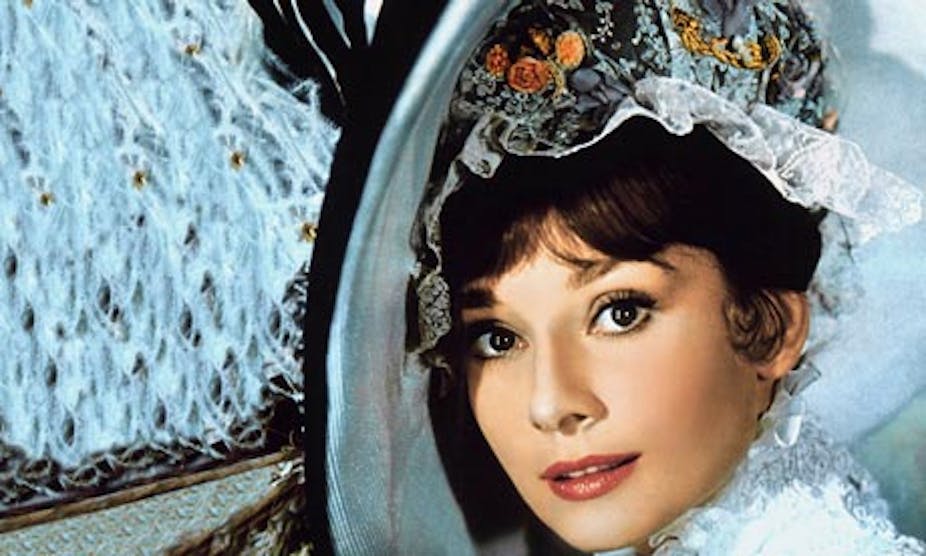The Conversation is running a series, Class in Australia, to identify, illuminate and debate its many manifestations. Here, Annabelle Lukin examines how the language we speak is marked by class, and what this means when kids go to school.
When Michael Caine became famous, he did not turn his back on his working-class Cockney roots. He told The New York Times:
I was always very aware of the class system in England so when I became a success I shoved it down their throats and continued to talk like I did.
Where he grew up, “you never thought of being an actor because you didn’t talk properly”. Caine’s Cockney dialect is known for its rhyming slang and its own vocabulary, beautifully illustrated in this Cockney Star Trek video, where Klingons are “proper naughty moody geezers”.
Dialects bring with them an ensemble of cultural associations, a rich resource for writers like Dickens, Twain and Achebe, who draw on dialectal features to create highly evocative characters. Dialects place speakers geographically and from a socioeconomic perspective.
Eliza Doolittle is another famous, albeit fictional, speaker of Cockney. Under Henry Higgins’ guidance, Eliza expunges her Cockney accent and “non-standard” grammar to become a “lady”.
However, the “standard” form of a language is much more than the superficial accent and grammar in Pygmalion. Standard English emerged as England became a nation state. English stepped up to the task of being the medium of administration, business, law and science, functions that were previously spread across three languages. Naturally, this change of role left its mark.
Linguists have disagreed over the significance of class-related linguistic variation. America’s most famous sociolinguist, William Labov, in his studies of African American Vernacular English, showed the remarkable heterogeneity of natural speech. His work should have laid to rest both popular prejudices about “proper grammar”, as well as the most risible academic fiction of 20th-century linguistics: Chomsky’s “ideal speaker/hearer” living in his “homogeneous speech community”.

Labov asked the most controversial question of 20th-century linguistics: does the language of working-class kids have anything to do with their poor educational outcomes? At roughly the same time, a British educational sociologist, Basil Bernstein, was also wondering why the lower the social stratum from which kids came, the higher the likelihood that they would fail to achieve the conventionally valued educational goals.
Labov and Bernstein offered opposite explanations for this failure. Labov, whose descriptions of class/dialect variation focused only on accent and grammar, rejected the proposition that language differences could explain why working-class kids were alienated by school. In Labov’s view, linguistic differences attributable to class were largely superficial – different ways of saying the same thing. Educational failure, Labov said, was caused by institutionalised racism.
By contrast, Bernstein believed differences in the speech habits of kids from different class backgrounds were tied into deeper habits of socialisation. Bernstein argued that social stratification was reproduced in and through interaction – class was so profound in the organisation of life it permeated everyday interactions. Through these interactions, children were positioned to see the world, and their place in it, through the eyes and experiences of their parents.
If the family breadwinner is a CEO, the world won’t look the same as it does to a kid whose household is run on the income of a cleaner. As Marx said, “Life is not determined by consciousness, but consciousness by life.” Contemporary neuroscience is giving credence to this view.
Class was as uncomfortable a topic back then as now. Bernstein, himself the child of working-class Jewish immigrant parents from London’s East End, was condemned. His views were labelled as a “deficit” model, as if he was saying the language of working-class kids was impoverished.
Empirical evidence to back Bernstein’s theory was collected by a linguist at Macquarie University in the 1980s. Ruqaiya Hasan recorded mother-child interactions in middle-class and working-class families in Sydney. She studied the everyday interactions of these families, like bath, meal and bed times.
Her data showed significant differences based on class (with class defined on the basis of degree of workplace autonomy). The mums in working-class families treated their kids as extensions of themselves, as part of a little cosmos that could be taken as given. They privileged solidarity, and a collective identity over an individualistic one. The child’s horizons were fashioned by the cut of the parental jib.
Middle-class mothers encouraged their children to construct a strongly individuated self - to see their sensations, reactions and beliefs as unique to them, and worthy of being voiced to others, a style exquisitely parodied by Catherine Tate’s posh mum.
The data also showed that middle-class mothers were fond of long discursive reveries. They would start with something in the child’s observable world, but move into realms of knowledge that transcended local time and space. By the time middle-class kids reach school, Hasan concluded, they have had considerable experience with the decontextualised language that characterises official pedagogic discourse.
Perhaps most importantly, these kids experienced a bigger sense of the world as a seamless part of the flux of the activities of living. The cultures of schooling decisively prefer the middle-class modes of talking and meaning. Hasan’s follow-up study showed how much teachers talk like the mothers of the middle class.
Fifty years after Bernstein and Labov wondered about the nexus between language and class, the inequities of schooling are as intractable as ever. School funding policies have constructed a sense of entitlement for private schools. And by hijacking intelligence, IQ testing has helped create and defend two systems of schooling.
Education – the key to overcoming social inequity – is largely organised to reproduce it. It would take a real education revolution to create “tomorrow’s optimism in the context of today’s pessimism”.
See the other articles in the series Class in Australia here.

